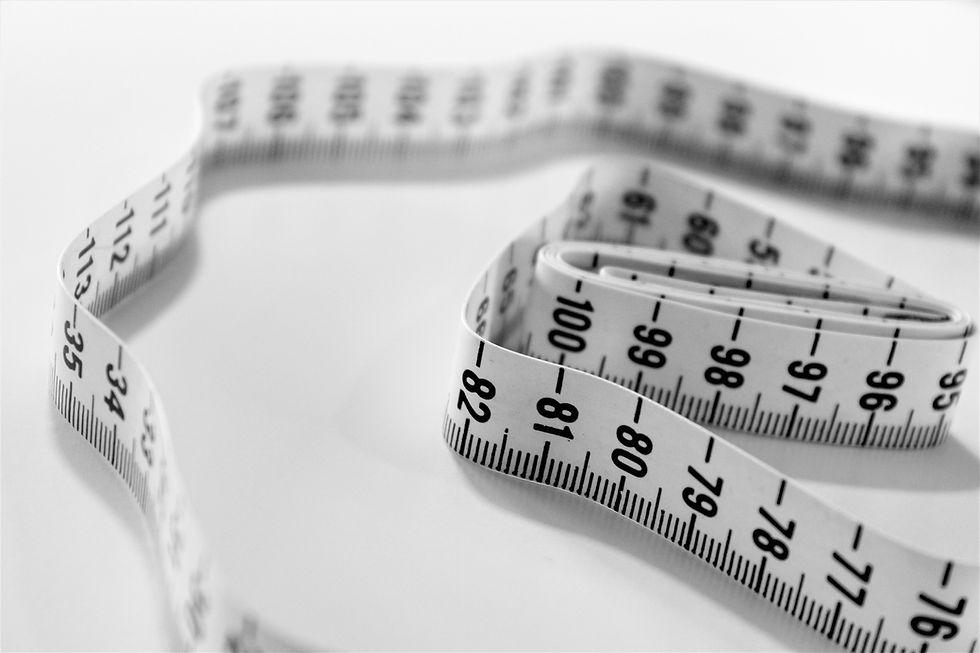Why Waist-to-Hip Ratio is a Better Way to Track Progress with PCOS
- Lisa Smith Nutritionist

- Jun 26
- 4 min read
Updated: Aug 3

Why Waist-to-Hip Ratio Matters More Than the Scales for PCOS
When you’re dealing with PCOS, weight loss can feel frustrating, especially when the number on the scales doesn’t reflect your effort. But what if you stopped focusing on weight alone, and started tracking something that gives you a clearer picture of your hormone and metabolic health? Enter, the waist-to-hip ratio.
This simple measurement gives more useful insight into PCOS-related risks like insulin resistance, inflammation and cardiovascular health than BMI or weight alone. In fact, waist-to-hip ratio is often a more meaningful way to track progress, especially if you’ve been doing all the right things but the scales aren’t moving.
Let’s explore why it matters, how to calculate it, and how to use it as a realistic, empowering progress marker.
What Is Waist-to-Hip Ratio?
Your waist-to-hip ratio (WHR) compares the circumference of your waist to that of your hips. It’s a simple tool used to assess where your body stores fat, which can tell us more about your metabolic health than your weight alone.
Why is this important for PCOS?
Women with PCOS often carry more weight around the middle due to the influence of insulin and androgen hormones. This pattern of weight gain (known as “central adiposity”) is linked to:
Insulin resistance
Higher risk of type 2 diabetes
Low-grade inflammation
Increased cardiovascular risk
Tracking your waist-to-hip ratio over time can show whether you’re reducing visceral fat (the type of fat stored deep in the abdomen), even if your weight stays the same. That’s often a better sign of improved health than a lower number on the scales.
How to Measure Waist-to-Hip Ratio

You only need a soft tape measure and a mirror. Try to measure first thing in the morning or at the same time each day, without clothes or tight-fitting waistbands that can affect accuracy. The NHS guide and calculator is here.
Step-by-step:
Measure your waist
Find the narrowest point between your lower ribs and the top of your hip bones (usually just above your belly button)
Stand relaxed, breathe out gently (don’t suck in your tummy)
Record the measurement in centimetres
Measure your hips
Measure around the widest part of your hips and buttocks
Keep the tape horizontal and snug, but not tight
Calculate your WHR
Divide your waist measurement by your hip measurement
For example:
Waist = 78cm
Hips = 100cm
WHR = 78 ÷ 100 = 0.78
What’s a Healthy Waist-to-Hip Ratio for PCOS?
In general, the recommended WHR for women is 0.80 or lower. Higher values suggest a greater risk of insulin resistance and cardiovascular disease, both of which are more common in PCOS.
WHR Score | What It Suggests |
< 0.80 | Lower risk pattern (pear shape) |
0.80–0.85 | Mild central fat distribution |
> 0.85 | Increased metabolic and insulin risk |
But remember - this isn’t about perfection. WHR is just a tool to track trends, not to judge your body.
Why WHR is More Useful than BMI for PCOS
Most of my clients have been told their BMI is “too high” or “normal” without any real context. But BMI has major limitations for women with PCOS:
It doesn’t tell you where fat is stored
It doesn’t account for muscle vs fat
It can be misleading during perimenopause or post-birth control
It doesn’t reflect hormonal health or metabolic improvements
Waist-to-hip ratio, on the other hand, helps highlight central adiposity, which is more strongly linked with insulin resistance, cardiovascular risk and androgen excess - all core features of PCOS.
How to Use WHR to Track Progress
Here’s how I encourage clients to use WHR in a realistic, non-obsessive way:
Track monthly, not daily or weekly – this avoids the noise of daily fluctuations
Use it alongside other markers – like energy, mood, cycle changes, and symptoms
Focus on trends, not one number – small changes still count
Avoid comparison to others – this is your journey
Many of my clients see WHR improvements before they notice big weight changes on the scales. That’s because nutrition and lifestyle changes (like balancing blood sugar, reducing inflammation and supporting hormones) often shift visceral fat before the scales budge.
Practical Tips to Support a Healthy WHR with PCOS
If your waist-to-hip ratio is higher than ideal, that doesn’t mean you’re failing, it simply highlights where we can focus.
Here are some evidence-based strategies I use with clients to support fat loss around the middle:
Stabilise blood sugar with regular meals, quality protein, and low-GI carbs, examples here
Prioritise sleep – poor sleep drives cortisol and insulin resistance
Limit ultra-processed foods – focus on whole, anti-inflammatory options, like these
Reduce stress load – not just mentally, but physically (overtraining, under-eating, poor recovery) Learn more about the stress, hormone imbalance link here.
Incorporate resistance training to improve insulin sensitivity and lean muscle
Use tools like my free Sugar Reset or PCOS Cravings Sample Meal Plan to reset habits gradually
Weight loss with PCOS is often slow, complex, and not always linear. That’s why tracking waist-to-hip ratio, alongside your symptoms and cycle, can give you a more encouraging, hormone-focused view of progress.
You deserve more than a number on the scales. WHR helps you zoom out and see what’s really changing, internally and hormonally.
Need help making sense of your PCOS symptoms or stalled weight loss?
I am a BANT registered nutritionist and health coach, specialising in nutrition support for PCOS weight and pregnancy planning or fertility. I work online with clients locally in Manchester and across the UK.
Inside my 12-Week PCOS Hormone Shift Method, I help you focus on real progress, hormonal, metabolic and emotional - with optional tools like journaling, tracking, food-first guidance, and regular support. Not ready for a full programme? Try one of my mini programmes here, Or book a 30-minute strategy call here.
Updated in June 2025 to reflect new PCOS research and nutrition strategies.
Note: This blog post is meant for informational purposes only and should not replace personalised advice.





Comments